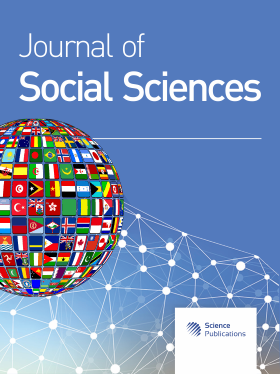A Model of Pulpit Conservation and Revitalization Using Community Participation of Phu-Thai People in Northeast Thailand
Abstract
Problem statement: This thesis aimed to examine the following issues of the pulpits: (1) background of the model and structure, (2) current conditions and problems of pulpit construction using participation of Phu-thai people in northeast Thailand and (3) model of conservation of revitalization of pulpits by participation of Phu-thai people. Approach: Data were collected from documents and field study in the provinces of Sakon Nakhon, Nakhon Phanom, Mukdahan, Kalasin and Amnat Charoen by survey, observation, interview, focused group discussion and workshop. Results: The results of thesis were presented by means of Phu-thai people in northeast Thailand, their ancestors moved from the left bank of the Mekhong River. Most of them came from Mueang Bok and Mueang Wang towns. The model and structure of the pulpits are from beliefs in village pillar spirits in harmony with faith in Buddhism. The pulpits were constructed for use in performing religious affairs as the architectural symbol. They are single-pillar pulpits to be used in conventional and traditional festivals in each of the twelve lunar months. The current conditions and problems of single-pillar pulpit construction include must of the raw materials for pulpit construction are wood which is damage, lack of taking care of, wood diseases from mold and breaking, expansion, bending, lack of pulpit repairers and builders lacking transferring knowledge to next generation. The preaching hall shape has changed from wood to be high-shaped wood. For models of conservation and revitalization, all sectors must participate in conserving and revitalizing pulpits. These sectors are community leaders, informants, state sector, constructors, provincial sector and the community for pulpit conservation and revitalization according to the elements. The model of single-pillar pulpit structure has these structures: base or pillar is 140 cm from the floor. There are base to support or 4 nagas to support. Each naga is 140 cm long. The pulpit shape is in the shape of multisided lotus with 4 holes on the walls. There must be conservation of traditions and culture according to the traditions in each of the twelve lunar months of the year from all sectors in a concrete form. Conclusion: The results of this study can be used for pulpit conservation and revitalization to be in existence. To solve problems of decay and loss, there must be a committee for pulpit conservation and revitalization. All sectors must participate in utilization of pulpits which have cultural values of Phu-thai people in the future.
DOI: https://doi.org/10.3844/jssp.2009.374.376

- 6,303 Views
- 3,723 Downloads
- 1 Citations
Download
Keywords
- Conservation
- revitalization
- conservation model
- revitalization model
- participation
- belief
- pulpit
